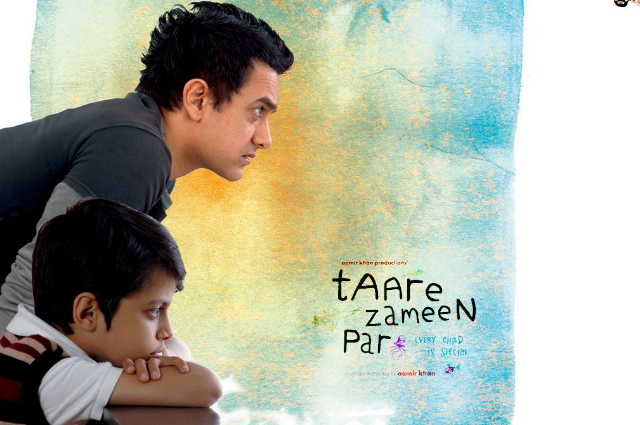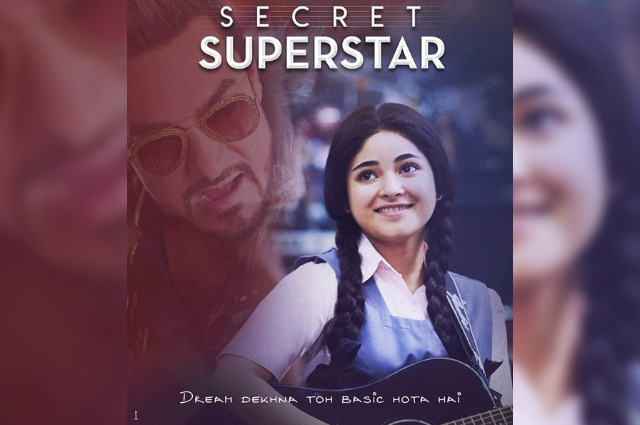
Cinema has the power to do more than tell stories. It can echo our emotions, reflect our failures, and remind us of the people we take for granted. But only a few films truly succeed in crossing the distance between the screen and our hearts. Taare Zameen Par and Secret Superstar, both produced by Aamir Khan, do just that. These films make us cry not simply because they are sad, but also because they evoke a deeper emotional response. They make us cry because they hold a mirror to our inner world. They walk us through the emotional bridge that begins with sympathy and ends in deep, transformative empathy.
Sympathy and Empathy: The Two Faces of Emotional Engagement
Before delving into the emotional architecture of the films, it is essential to understand the distinction between sympathy and empathy. Sympathy is when you feel bad for someone. You observe their pain from a distance. Empathy, however, invites you in. You do not merely understand what someone is going through and experience their emotions as if they were your own. In cinema, sympathy might make you cry for a character. Empathy makes you cry with them. The beauty of Taare Zameen Par and Secret Superstar lies in how they orchestrate this emotional transition with subtlety and care.
Taare Zameen Par: From Pity to Personal Awakening
The Struggles of Ishaan and the Viewer's Emotional Distance
The first half of Taare Zameen Par introduces us to Ishaan, a child who struggles with dyslexia. His world is painted with confusion, punishment, and alienation. We see his tears. We feel injustice. But at this point, our reaction is mostly sympathy. We feel sorry for him. He is someone else's child. Someone else's problem. Songs like Meri Maa hit hard because we imagine how terrible it must be for him. But there is still a gap between us and Ishaan. He is a figure of pity, not yet a part of us.
The Turning Point: Enter Ram Shankar Nikumbh
When the character of Ram Shankar Nikumbh, played by Aamir Khan, enters the story, the film shifts focus. Nikumbh does not simply help Ishaan. He challenges the entire system that failed to see Ishaan’s potential. He questions the norms of parenting and schooling that many viewers have internalized. The message begins to generalize. Ishaan becomes a symbol of many children who are crushed under pressure. Nikumbh’s approach broadens the narrative from one boy’s suffering to a social reality. This shift allows the audience to see their own lives, parents, teachers, and childhood within the story.
The Emotional Climax: From Guilt to Healing
The title track Taare Zameen Par is a masterstroke. It does not focus on Ishaan’s disorder. Instead, it talks about how every child has a spark. All at once, it stops feeling like a sad story and starts feeling deeply personal. They feel implicated. The tears that follow are no longer from pity. They come from recognition, guilt, and self-reflection. Maybe we were too harsh on a sibling. Conceivably we misunderstood a friend. Conceivably we carry the scars of not being understood ourselves. The film holds our hand and walks us into a universal emotional space where Ishaan’s story becomes our own.
Secret Superstar: From Sorrow to Gratitude
India's Struggle and the Viewer’s Protective Instinct
Secret Superstar opens with another emotionally loaded premise. Insiya is a teenage girl with big dreams and an abusive father. Her mother suffers silently. Her hopes are tied to a laptop, a song, and the possibility of being heard. The audience again feels sympathy. Insiya is a victim. She is talented, brave, and suffering. We cry for her, especially when her dreams are shattered by domestic violence. The situation feels unjust, and the audience reacts with sorrow. But just like in Taare Zameen Par, this is only the starting point.
The Twist: Gratitude as an Emotional Bridge
What sets Secret Superstar apart is its use of gratitude as the key to empathy. As Insiya’s journey progresses, we begin to see her more clearly. She is not perfect. She is impulsive, occasionally ungrateful, and flawed. This complexity makes the help she receives from others even more touching. Characters like Chintan, her mother, and Shakti Kumaarr rise above their earlier appearances to support her. The audience begins to feel something deeper than just sorrow. They begin to feel thankful for the kindness of these characters. Gratitude starts to replace helplessness. The tears now come from an overwhelming sense of appreciation for quiet, everyday heroes.
The Emotional Highlight: Recognizing the Invisible Superstars
The songs Main Kaun Hoon and Meri Pyaari Ammi are not just musical pieces. They are emotional revelations. In Main Kaun Hoon, Insiya finds her voice, but it is Meri Pyaari Ammi who brings the audience to tears. The song is a love letter to her mother, the real secret superstar who made every sacrifice possible. The film’s climax shifts from Insiya’s journey to her mother’s courage. This final transition draws out deep empathy from the audience. We are no longer sad for Insiya. We are grateful to the women, mothers, friends, and mentors in our lives who lifted us quietly when we were falling.
Subtle Storytelling and Emotional Design
Both films are masters of emotional architecture. They begin with narrow, specific situations and then widen the lens. The sorrow we feel in the first half is slowly replaced by understanding, guilt, gratitude, and healing. This progression mirrors the movement from sympathy to empathy. A key technique used in both films is the shift in character arcs. Ishaan and Insiya start as the focus, but by the end, the supporting characters take emotional center stage. Ram Nikumbh and Insiya’s mother are the emotional catalysts that deepen the audience’s connection to the story.
Parental and Societal Commentary
Another reason these films resonate so deeply is their commentary on family and society. In Taare Zameen Par, the critique is on performance-driven parenting that ignores the uniqueness of a child. In Secret Superstar, the critique is on patriarchy and the silence of domestic suffering. These themes are familiar, not foreign. They touch nerves. The viewer begins to reflect on their upbringing, their parents’ struggles, or how they may have judged someone unfairly. These reflections are what make the tears real. The films do not ask us to feel sorry for someone else. They ask us to look within.
Final Emotional Impact: From Observer to Participant
By the time the credits roll, both films have transformed their audience. In Taare Zameen Par, we begin by watching Ishaan suffer. By the end, we celebrate his triumph and question our role in the lives of children around us. In Secret Superstar, we start by worrying about Insiya. By the end, we applaud her mother and carry a new sense of thankfulness for those who shaped our paths. This is not manipulation. It is emotional education. The audience does not remain a passive observer. They become emotionally invested participants. And that is why the tears come—not just from pain, but from connection, growth, and gratitude.
Taare Zameen Par and Secret Superstar are more than films. They are experiences that stay with us long after the lights come back on. They make us cry not because they are sad, but because they are honest. They speak a language of emotion that does not shout, but whispers. They invite us to shift from feeling sorry for others to understanding ourselves. And in that space between sympathy and empathy, between tears of sorrow and tears of healing, lies the true magic of cinema.

